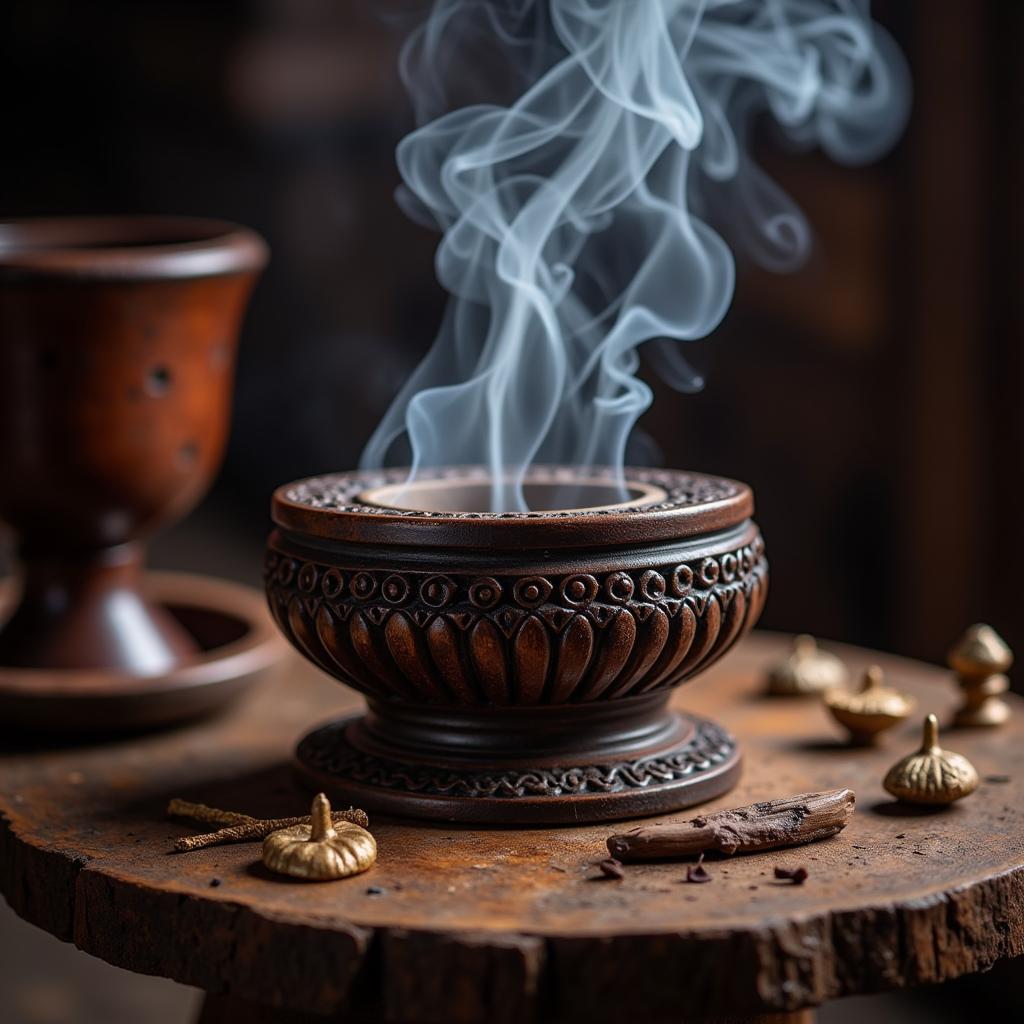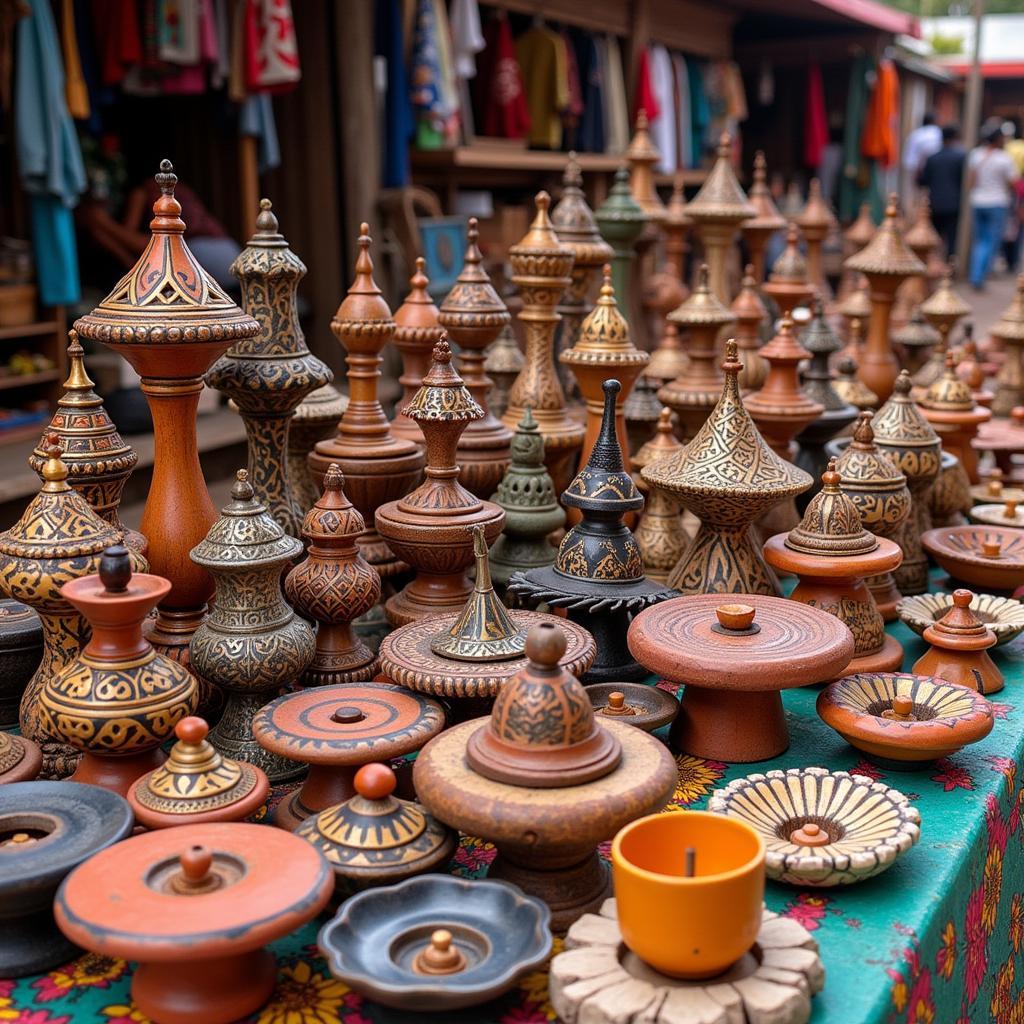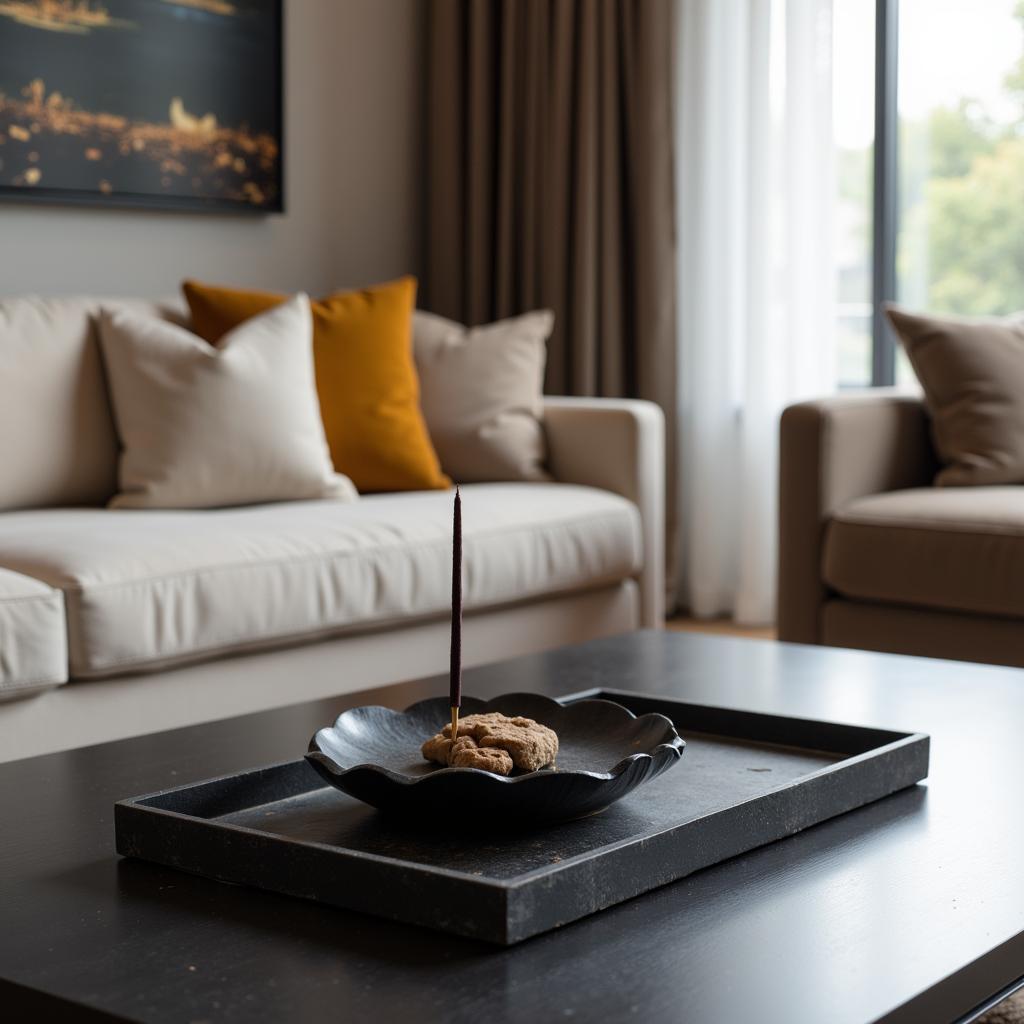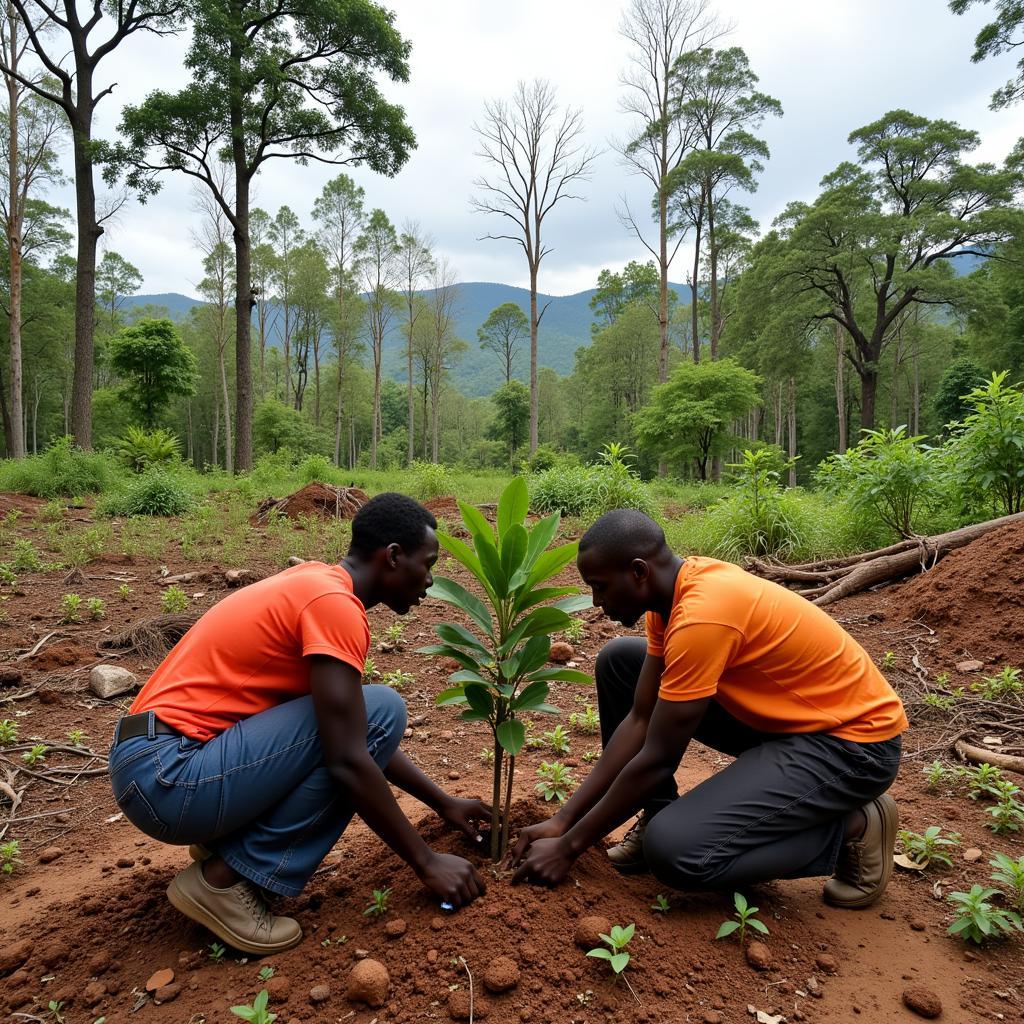The Enchanting World of African Incense Holders
African Incense Holders are more than just decorative objects; they are expressions of art, spirituality, and cultural heritage. From the intricate carvings of West Africa to the sleek, minimalist designs of the East, these holders offer a glimpse into the diverse traditions and craftsmanship of the continent.
 African incense burner used in a traditional ceremony
African incense burner used in a traditional ceremony
A Sensory Journey Through History and Culture
The use of incense in Africa dates back centuries, interwoven with rituals, ceremonies, and daily life. In many cultures, burning incense is believed to purify spaces, ward off negative energy, and connect with the spiritual realm. African incense holders, often crafted from natural materials like wood, clay, or stone, reflect these beliefs and practices.
For example, among the Yoruba people of Nigeria, elaborate incense burners known as “Ibeji” are used to honor the spirits of twins. These intricately carved figures represent the duality of life and death, and the smoke from the incense is believed to carry prayers and offerings to the ancestors.
 Handcrafted African incense holders displayed at a local market
Handcrafted African incense holders displayed at a local market
Exploring the Diversity of African Incense Holders
The continent’s diverse geography and cultures are reflected in the variety of incense holders found across Africa.
West Africa:
West African incense holders are often characterized by their bold designs and intricate carvings. Wood is a popular material, with skilled artisans transforming it into intricate figures, masks, and abstract forms. Brass and bronze are also commonly used, often featuring detailed motifs and geometric patterns.
East Africa:
In East Africa, incense holders tend towards simpler, minimalist designs. Clay and soapstone are often favored materials, shaped into elegant bowls, cones, and geometric forms. These holders often feature natural colors and textures, highlighting the beauty of the raw materials.
Southern Africa:
Southern African incense holders often incorporate elements of nature, reflecting the region’s strong connection to the land. Wood, stone, and metal are common materials, often combined with natural elements like shells, beads, or feathers.
 African incense holder used as a decorative element in a modern home
African incense holder used as a decorative element in a modern home
Choosing the Perfect African Incense Holder
With such a wide array of styles and materials, selecting an African incense holder can be a delightful journey of discovery.
“When choosing an incense holder, consider the overall aesthetic of your space and the type of incense you prefer to burn,” advises Abeni Oladele, a cultural curator specializing in African art. “A holder crafted from natural materials like wood or clay can add a touch of warmth and earthiness, while a more ornate piece can serve as a striking focal point.”
Whether you’re drawn to the intricate carvings of West Africa, the sleek designs of the East, or the nature-inspired creations of the South, an African incense holder is a beautiful and meaningful way to bring a touch of African culture and spirituality into your home.
FAQs about African Incense Holders
1. What types of incense are traditionally used in African incense holders?
Traditional African incense often includes resins like frankincense and myrrh, as well as herbs, woods, and spices.
2. Are African incense holders only used for spiritual purposes?
While often used in spiritual practices, African incense holders are also appreciated for their aesthetic beauty and can be used simply to fragrance and enhance a space.
3. How do I clean my African incense holder?
Cleaning methods vary depending on the material. Generally, a soft cloth and mild soap can be used. Avoid harsh chemicals or abrasive cleaners.
Need Help Finding the Perfect African Incense Holder?
Contact us! Call us at +255768904061, email us at kaka.mag@gmail.com, or visit us in Mbarali DC Mawindi, Kangaga, Tanzania. Our dedicated customer service team is available 24/7 to assist you. Explore more about African culture and art in our other insightful articles.




